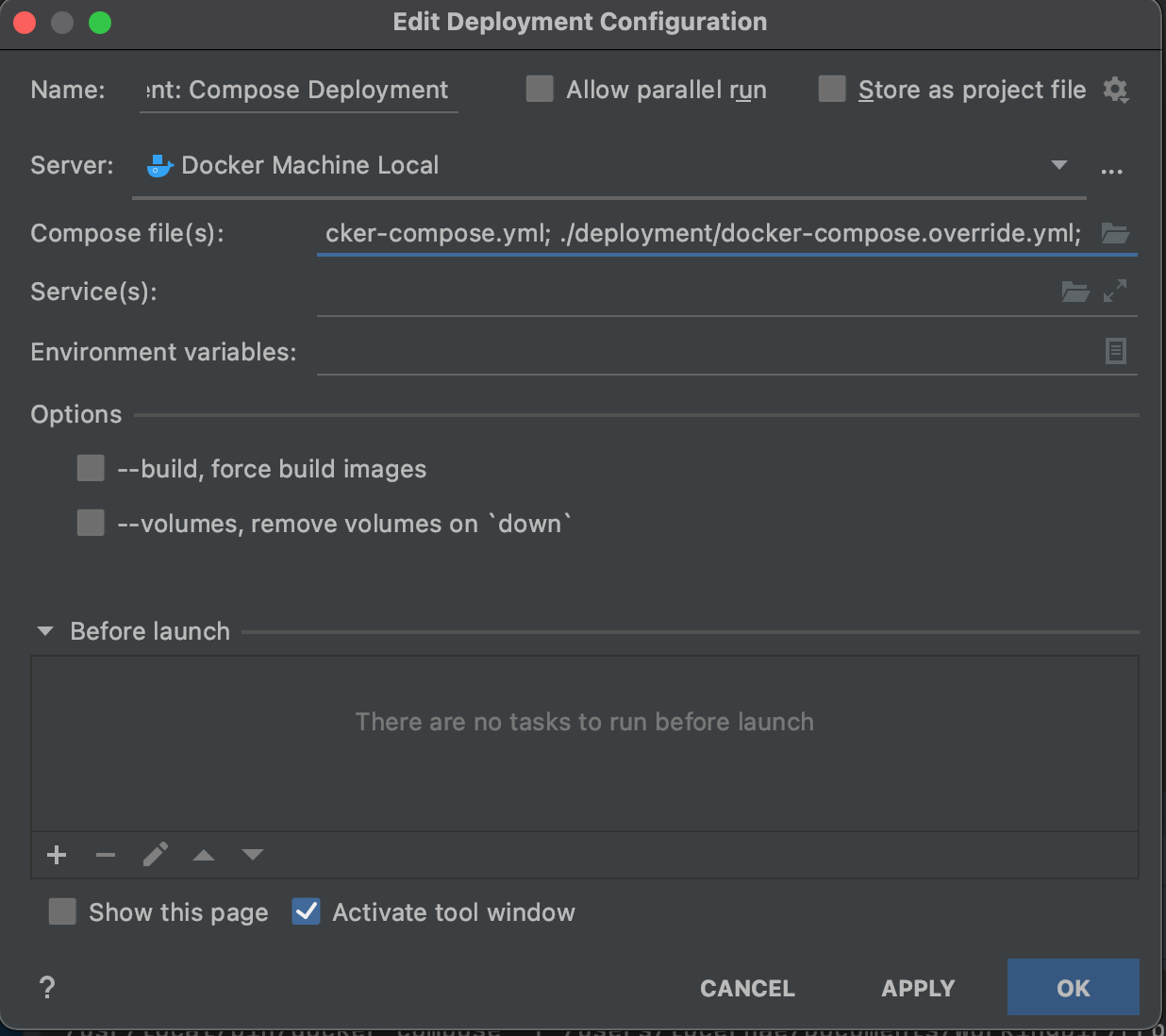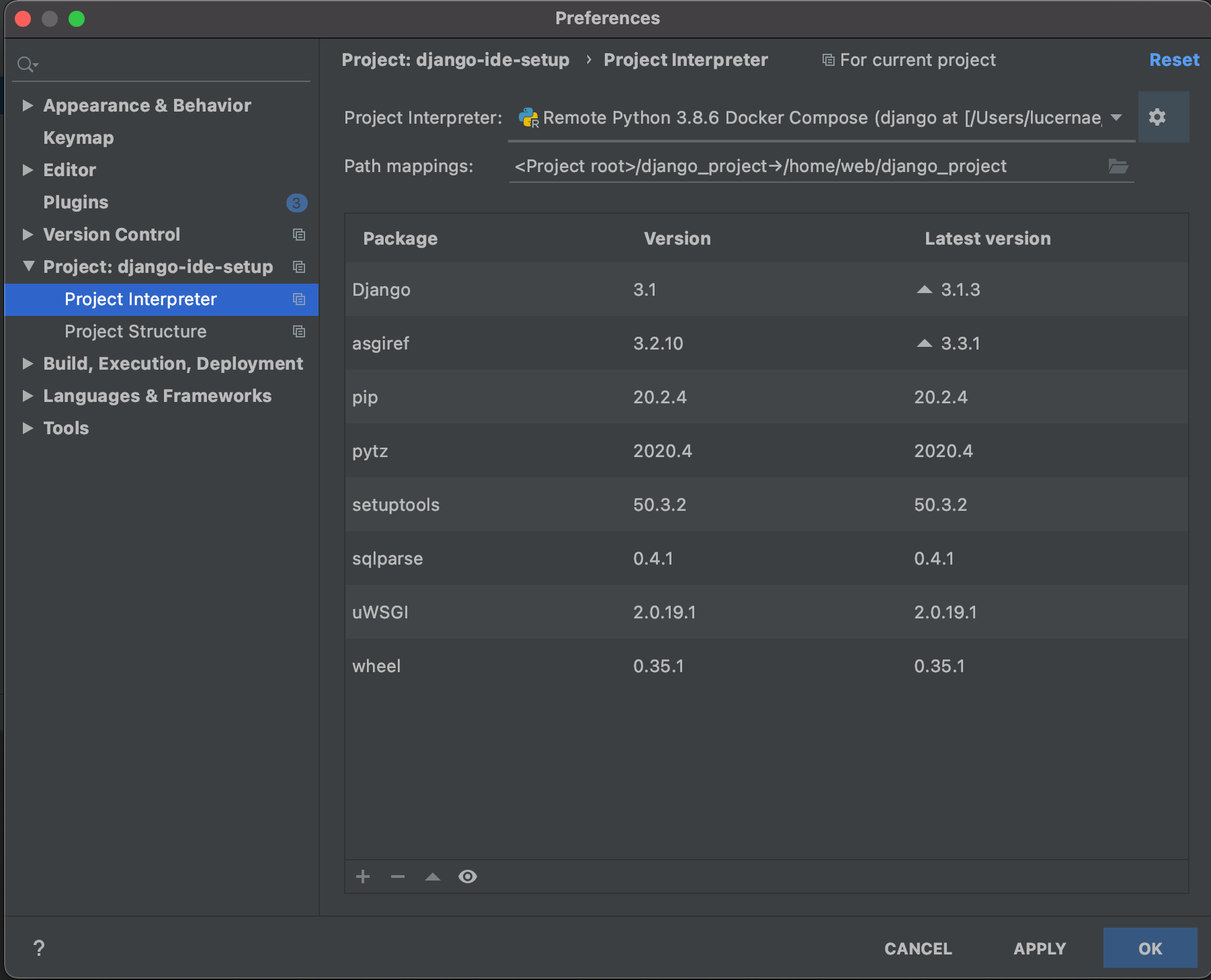

Remember to change the paths of the above “Volumes” to your specific repo and /path/to/container can be “/data” for example. path/to/host/project/:/path/to/container It ensures that commands we run in Pycharm are executed on containers (which Pycharm deploys for us, more on that later) and also to share file volumes (hard drive, etc) between the host OS and the container OS. Please refer to the TensorFlow dockerfiles documentationįROM nvidia/cuda$ĭocker-compose.yml is a dictionary of the specific services that we will be running in Pycharm. # This file was assembled from multiple pieces, whose use is documented
#Pycharm docker license#
# See the License for the specific language governing permissions and # WITHOUT WARRANTIES OR CONDITIONS OF ANY KIND, either express or implied. # distributed under the License is distributed on an "AS IS" BASIS,

#Pycharm docker software#
# Unless required by applicable law or agreed to in writing, software

# You may obtain a copy of the License at # you may not use this file except in compliance with the License. # Licensed under the Apache License, Version 2.0 (the "License") We have made some minor adjustments to the original Dockerfile - such as having python-tk and the requirements.txt file, so the final Dockerfile looks as follows: # Copyright 2019 The TensorFlow Authors. As I have an Nvidia 2080 GTX TI graphics card (with CUDA 10.1), I will be using the following Dockerfile for Tensorflow 2.1.0 (current version) from the official Tensorflow Github. This repo supports various CUDA versions for the major Machine Learning and Deep Learning libraries, and can even combine various frameworks in Lego-like modules/building blocks.įor this specific example we will be using a GPU-enabled Tensorflow Dockerfile. There exists an excellent repo ufoym/deepo created by Ming Yang. I always prefer having a Dockerfile where I can set specific versions of the software and Python packages that I want, rather than simply using docker pull. There are several excellent online guides that explain this in more detail, which I highly recommend if you are new to Docker. Dockerfileįor people unfamiliar with Dockerfile, it essentially forms a blueprint or recipe for creating Docker images, which will be used for deploying Docker containers subsequently. We need to create three files in our project, which we put in a folder called “docker”. The steps for any other DL framework will be nearly identical. To explain the setup as thoroughly as possible, we will show all the neccessary steps to get a GPU-enabled Tensorflow up and running. Everything will be running “behind-the-scenes”, meaning that your development in Pycharm will be very similar to your regular workflow.
#Pycharm docker code#
All your code (and data) will be automatically uploaded and synchronized to your docker container when there are updates.If stuff breaks - no big deal, we will just create a new container.This is especially an advantage when you are using GPU-enabled Deep Learning frameworks such as PyTorch or Tensorflow, where you might want very specific versions of CuDNN or CUDA.
#Pycharm docker full#
You have full control of the entire OS - not just the Python packages like when you use anaconda or pipenv.In this post I will write my workflow for using Pycharm and Docker (docker-compose) together. Note: This guide requires you to have both Linux (I am using Ubuntu 18.04), P圜harm Professional (to support Docker), Docker and Nvidia-Docker (for GPU images).


 0 kommentar(er)
0 kommentar(er)
